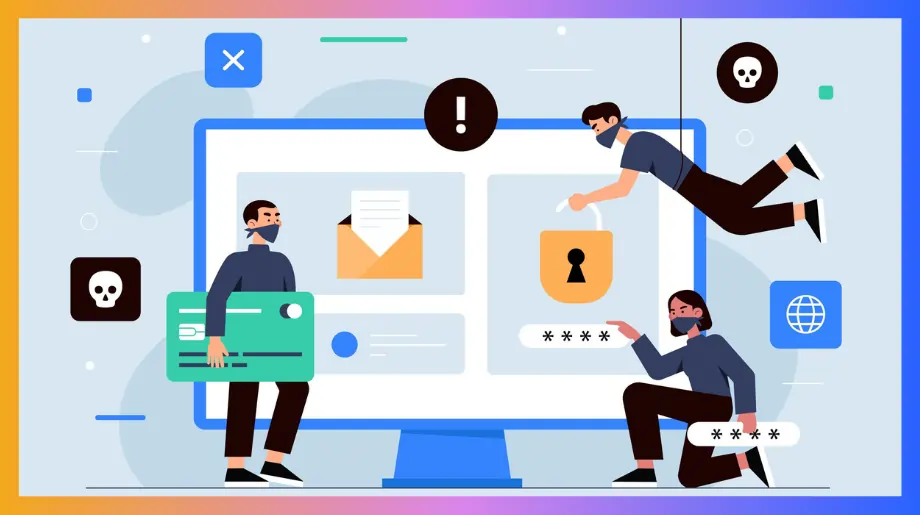Choosing the right identity management approach for customers is crucial for businesses to tackle today’s security challenges. To choose the right customer identity and access management(CIAM), you need to understand the intricate architecture of CIAM to ensure you offer smooth user experience and convenient login for your app users.
What is a CIAM solution?
CIAM is a subset of IAM (Identity & Access Management) that works to manage and control identities within an ecosystem. It helps in fostering safe login, individualized engagement and meeting data regulatory compliance. CIAM allows the usage of social media login convenience for users while at the same time protecting their information.
CIAM is designed to have capabilities of self-service where users have to handle themselves with activities such as password resets and preference settings.
Key components of CIAM:

- User On-Boarding: This is a process that deals with introducing new customers/clients to an organization’s services in a secure and efficient way. A streamlined login process and eliminating the need for multiple passwords across different applications reduces the frustration and creates a more positive first impression.
- User Profile Management: This is a core strength of CIA that lets businesses understand their customer preferences from the login credentials and manage all user data from a single point. That means enhanced security, personalized experiences (think SSO and self-service updates), and compliance with data privacy regulations. This in turn helps businesses build secure, user-friendly, and data-driven customer interactions.
- Single Sign-On or (SSO) : One login and multiple access. SSO is a key feature that users today mostly prefer when trying to login to a new system or existing system. Users don’t have to remember complex passwords every time, simply use their facebook or gmail credentials and get instant access to an application. This has in recent years opened up opportunities for businesses to allow first time users instantly try their product or either they have to fill up a long form and bounce rate was too high. Passwordless SSO is a key component of a CIAM especially if you are looking to invest in a futuristic CIAM.
- Authentication: CIAM offers various methods for customer authentications like username/password combo, social logins, otp based logins, magic links and multi-factor authentications, allowing applications to leverage secure and convenient login experiences.
- Integration with Fraud Detection: This term specifically focuses on preventing fraudulent activities that involve the misuse or theft of customer identities for malicious purposes, such as account takeover, unauthorized access, and fraudulent transactions.
What are the Pillars of Customer Identity and Access Management?
The framework categorisation is the breaking down of CIAM into its key building blocks which are the CIAM pillars. These pillars are relevant to deliver the customer identities, provide authorization mechanisms for the services and offer secure & personalized service to the users.

- Multi Factor Authentication: Multi-factor authentication is a process whereby two or more factors from the credential type are utilized to improve security of the user’s credentials; the factors include: what the user knows- such as password, what the user has- such as a mobile device or token, and what the user is- such as a fingerprint. Due to the fact that MFA employs several components to validate the identity, the possibilities of intrusion are minimized.
- Privacy and compliance: privacy and compliance are two important elements which are associated with CIAM, or Customer Identity and Access Management. Ensuring that all the data privacy laws and policies like the GDPR, the CCPA, and other data privacy policies are followed is crucial to the customers’ confidence in this organization and their confidentiality.
- Scalability and High Availability: Making sure the CIAM system can support more and more users and the corresponding transactions, always being available and performing well, contributes to a great user experience.
- Analytics: Through the use of data like patterns of login, a user’s profile, statistics among others, it becomes possible for organizations to develop the customer’s profile and work towards ensuring that they bring appropriate updates regarding services that will suit the customer’s needs best at any particular time as well as make data-based decisions that would help improve the satisfaction of customers as well as the levels of engagement.
- APIs: Every CIAM system should have API connections to other applications and services so that the respective systems would be able to work together. APIs also help with the integration between applications since one can easily pull data from another and merge the data into their own application to create a 360° perspective of the customer.
Conclusion:
Architecture of CIAM solutions is generally formative in providing secure, frictionless, and personalized experiences to the customers. Key components that should be incorporated include identity providers, authentication and authorization components, user directories, access management, user self-service, consent management, and analytics to enhance the management of customer identity and secure the businesses data.
Try a demo of UniFed, CIAM solution by Infisign specifically designed for apps of today to offer SSO for customers in minutes. UniFed doesn’t require any development, and it’s easy to integrate, and supports all leading authentication providers. UniFed is best known for reducing lengthy sales cycle for SaaS founders and offers a unique pricing model making it an ideal choice for CIAM. To see a demo, click here.





















